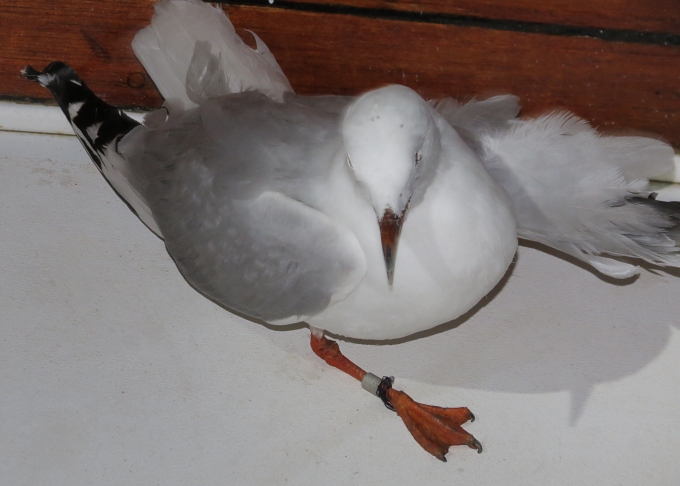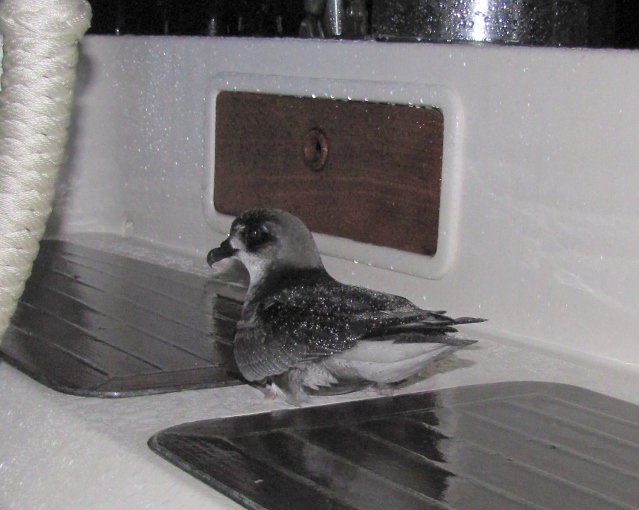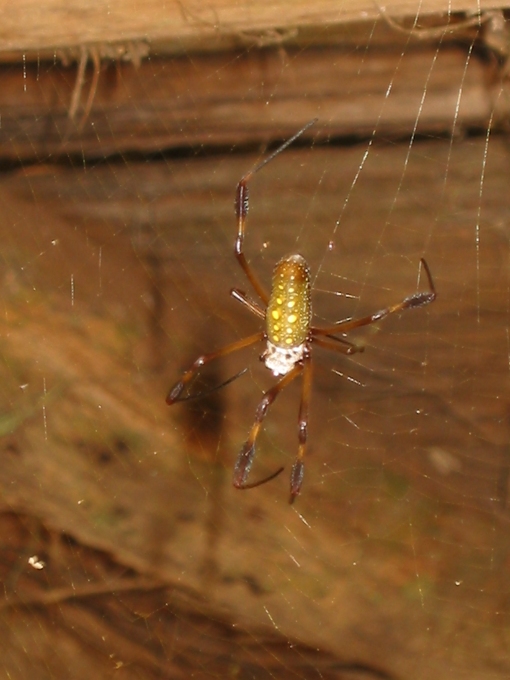Things that go "bump" in the night
/ “From ghoulies and ghosties and long-leggedy beasties and things that go bump in the night...good Lord, deliver us.” An old Scottish prayer
“From ghoulies and ghosties and long-leggedy beasties and things that go bump in the night...good Lord, deliver us.” An old Scottish prayer
It was after 10pm. We were winding down the day, near the end of a video on the computer, almost falling asleep when WHAM!...something hit the boat.
We jumped up, startled and clambered on deck. Our heartbeats quickened; a little adrenaline rush. David turned on the spreader lights. He rushed aft; I shot forward. The night was inky black, the moon behind thick clouds. The wind had been in the mid-high 30 knot range all day. We feared one of the little boats on moorings in the bay had broken loose.
David called to me: “I found what hit us.” I made my way aft, looking in the water for a log or little skiff. I could see nothing. David pointed to his feet. A rather large seagull had flown head-on into our shrouds and was laying on the deck in a stupor. The WHAM had been very significant and this guy had obviously been speeding and not looking at where he was going. He lay very still for several minutes and then slowly came around, squawking loudly at us as if we had planted those shrouds in the way just to trip him up.
 We had had a similar instance in Preservation Inlet, Fiordland, way down on the southern tip of New Zealand's South Island. At anchor on a rainy, foggy night, we heard a similar WHAM. It was a fairy prion on our coach roof. It apparently had hit the boom while flying over the boat. He gathered his little prion wits together as we scrambled topsides and flew away before we really had a good look at him. We went back down below.
We had had a similar instance in Preservation Inlet, Fiordland, way down on the southern tip of New Zealand's South Island. At anchor on a rainy, foggy night, we heard a similar WHAM. It was a fairy prion on our coach roof. It apparently had hit the boom while flying over the boat. He gathered his little prion wits together as we scrambled topsides and flew away before we really had a good look at him. We went back down below.
 Shortly thereafter, there was loud TWANG, then a THUMP. Was this the same prion or a different one? It sounded as if he'd hit a shroud. Before we could open up the companionway slider and get topside to investigate, we heard something tap, tap, tapping at our portlights. A prion was peeking in at us from the side deck. We heard a commotion in the cockpit. Another prion, no two prions, no four … we lost count … were sitting in our cockpit, pecking at the portlights and at the companionway hatch boards. A couple were just relaxing on the cockpit seats. We could hear them chatting amongst themselves. “Do you think anyone's home? Will they let us in?” Most of the birds eventually found their way out of the cockpit and flew off. A couple remained and David gently wrapped them in towels and put each in turn back into the water.
Shortly thereafter, there was loud TWANG, then a THUMP. Was this the same prion or a different one? It sounded as if he'd hit a shroud. Before we could open up the companionway slider and get topside to investigate, we heard something tap, tap, tapping at our portlights. A prion was peeking in at us from the side deck. We heard a commotion in the cockpit. Another prion, no two prions, no four … we lost count … were sitting in our cockpit, pecking at the portlights and at the companionway hatch boards. A couple were just relaxing on the cockpit seats. We could hear them chatting amongst themselves. “Do you think anyone's home? Will they let us in?” Most of the birds eventually found their way out of the cockpit and flew off. A couple remained and David gently wrapped them in towels and put each in turn back into the water.
 Discussion with a naturalist a few days later confirmed that this was not unusual on foggy nights. The birds became confused and disoriented and headed towards light … our anchor light and interior cabin lights to be exact.
Discussion with a naturalist a few days later confirmed that this was not unusual on foggy nights. The birds became confused and disoriented and headed towards light … our anchor light and interior cabin lights to be exact.
Well, back to our night visitor. It was dark, but not rainy or foggy. Our seagull friend had no excuse other than he wasn't paying attention. He squawked a bit more, but looked like he was no worse for the wear. He fluttered and flapped his wings a bit, but still appeared a bit disoriented. David wrapped a towel around him and put him back in the water, hoping he'd recuperate better in his own element.
You just never know when friends are going to drop in.










